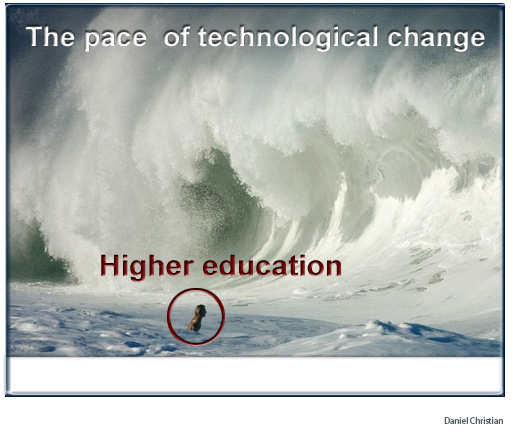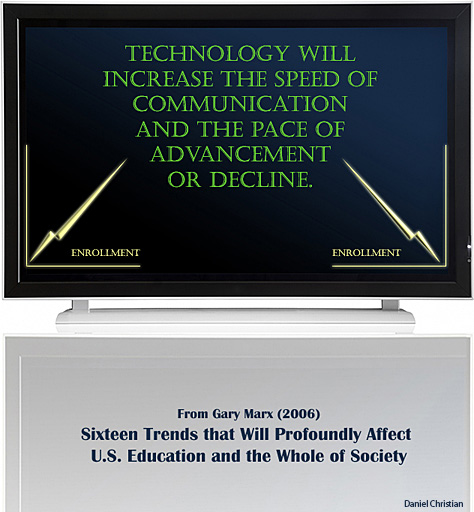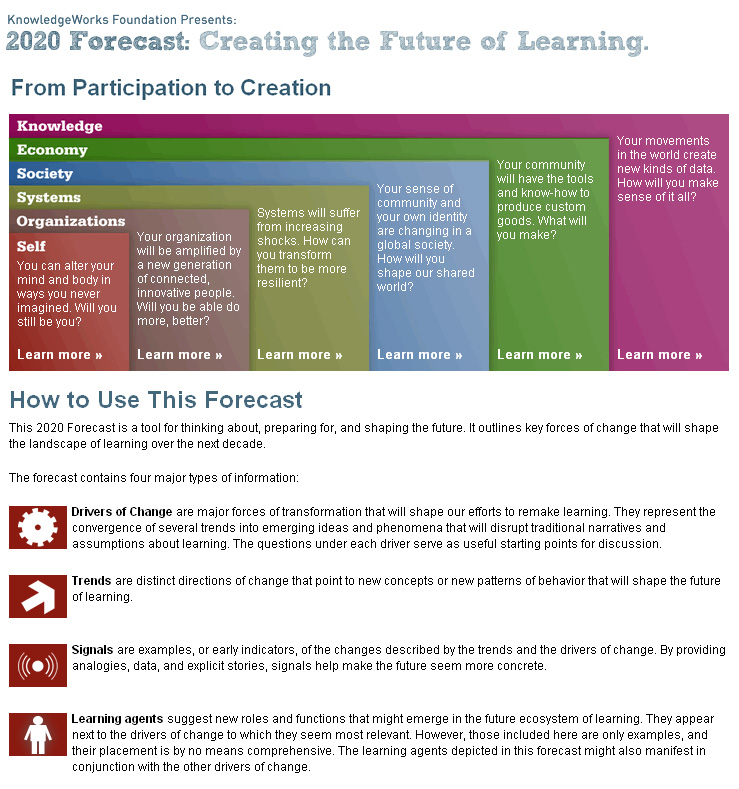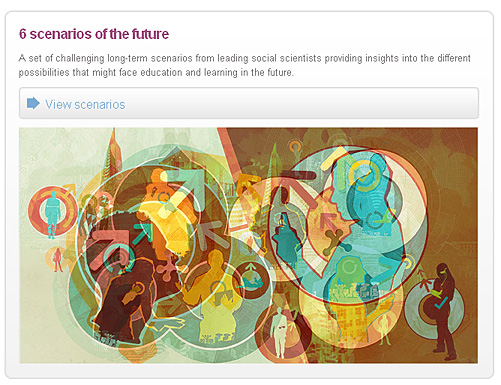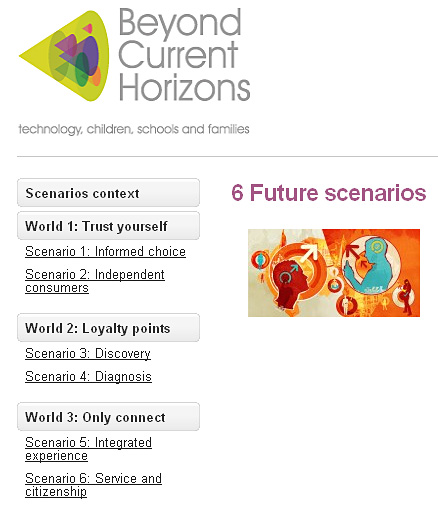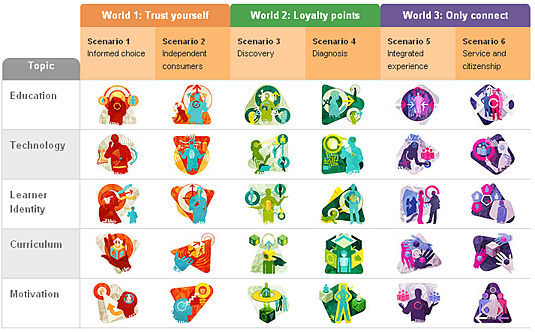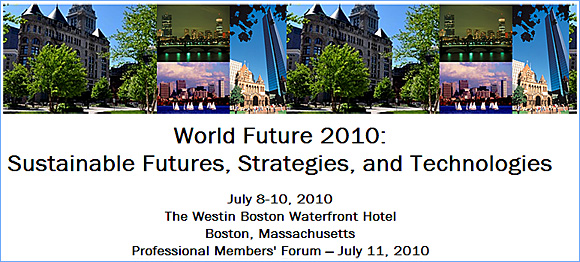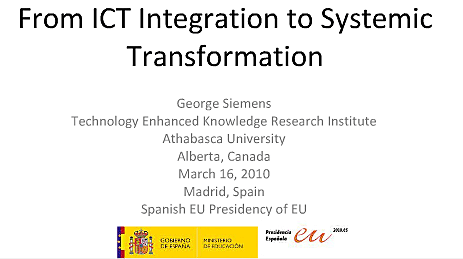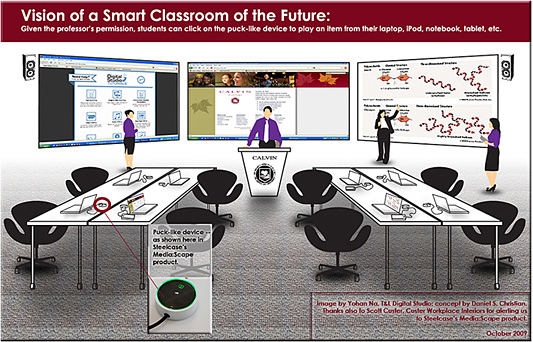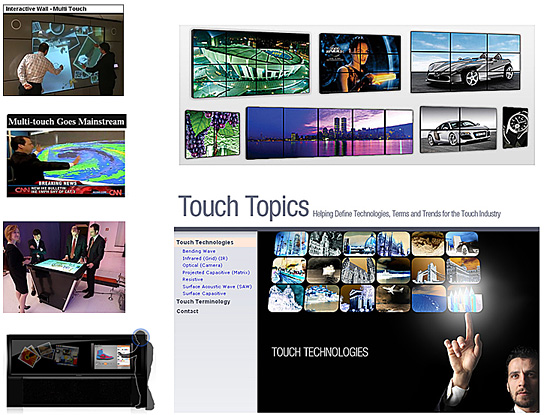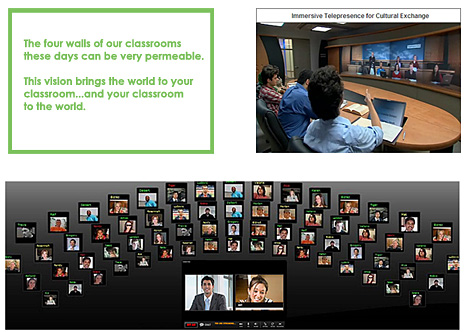The coming melt-down in higher education (as seen by a marketer) — by Seth Godin
For 400 years, higher education in the US has been on a roll. From Harvard asking Galileo to be a guest professor in the 1600s to millions tuning in to watch a team of unpaid athletes play another team of unpaid athletes in some college sporting event, the amount of time and money and prestige in the college world has been climbing.
I’m afraid that’s about to crash and burn. Here’s how I’m looking at it…
From DSC:
Seth’s perspectives on this are similar to what I’ve been saying — and warning would happen — for years now.
My take on the future of higher education is that someone will get it right and will be able to offer team-created and delivered content 24 x 7 x 365 that is mind-blowing by today’s standards and will be able to package and deliver that content and learning experience at discounts of 50%+ off of today’s prices. Yeah, yeah, yeah I hear ya say. Right Daniel…I’ve heard it all before.. your talk about disruption…about technology, etc. etc. etc.
You might have heard it, but you haven’t seen it in higher ed……....yet! My take on this is that you will see this happen. Massive change. The great commoditization of higher education as we know it today. The bubble is about to burst.
After all, the same publishers are selling the same textbooks to many institutions of higher education. In fact, I’m surprised that some publisher hasn’t yet taken a right turn and started offering degrees.They have access to subject matter experts (SME’s), teams of talented instructional designers, programmers, project managers, interface designers, legal/copyright experts, etc. What they lack is accreditation.
More and more I think societies will become increasingly interested in what you can DO and not where you attended school. Sure, there will still be those companies who want to hire only from ____ , ____, or _____; but that type of hiring perspective may not hold up if that organization is being outperformed by others. Also, who knows if corporations are even going to be around in 20 years. It’s turning into a situation where everyone is their own brand, their own company. Project teams come together, do the project, and then disband.
If students are paying a premium today, they should be paying that premium to go to an institution of higher education that:
- Has excellent faculty members — knowledgeable, passionate teachers who know their material cold and know how to teach that material; they are adaptable and are open to changing pedagogy and the use of various kinds of technologies
- Emphasizes and rewards teaching — not necessarily research
- Provides small class sizes and/or the ability to meet frequently with their professors (not a TA, not a grad student, and not a faculty member who might be a skilled researcher but who doesn’t know how to teach very well)
The thing all of us in higher ed need to be on guard about and the question we need to constantly be asking ourselves is, “How do we keep from becoming a commodity? What value do we bring to the table? Why should someone pay X when they are about to be able to pay 0.25 X elsewhere?”
Managing Higher Education Technology: An Interview with Dr. Tony Bates — from the Higher Education Management Group
However, how that mission is delivered must and will change, if universities and colleges are to survive (or rather, if independent, publicly funded educational institutions are to survive). In particular, we have to move away from the idea of the classroom as the default model for teaching and learning, to looking it as just one of many tools we have for teaching and learning. If over half the population needs not only post-secondary education, but also ongoing lifelong learning, and the main means of communication are technological, we cannot effectively provide higher education in a factory-like structure organized like a factory, with everyone at the same place at the same time. So it is in the delivery and organization of teaching and learning where fundamental change is needed.
Managing Higher Education Technology: An Interview with Dr. Tony Bates
About the Reinventing Higher Education Conference
A conference organized by IE University, Segovia (Spain), 4th May 2010.
The field of Higher Education is experiencing one of the most fascinating and challenging transformations since the foundation of the first universities eight centuries ago (emphasis here and below by DSC):
• New actors are entering and are supplementing the traditional role of the State and other grand institutions in setting the agenda of education institutions.
• New technologies are reshaping the way knowledge is generated and distributed, including the learning methodologies, the forms of delivery and even the role of professors.
• A new profile of students is entering higher education. The web generation brings new skills and attitudes into class. At the same time, continuous education is becoming a fast-growing segment for many universities.
• The internationalization of education stakeholders and cross-border mobility are key features of the new higher education environment.
• Transnational accreditation and ranking systems may play key role in constructing and signaling the quality of the diverse institutions
• The governance and funding of higher education centers will vary and universities and governments may seek alternative sources of income.
• Universities may become catalysts of innovation and more accountable to society in a number of ways: how research is applied in development and innovation, the connections between university departments and companies as well as the relevance of education for graduates’ careers.
Moving college into the 21st century — politico.com (see quotes below)
Today, we’ve reached another turning point. The global economy is changing, and the United States needs to educate its way to a better economy for the 21st century. President Barack Obama has set a goal that by 2020, America will once again have the highest proportion of college graduates in the world. To reach that goal, we need to bring 5 million more Americans into higher education and ensure that future generations will have the same opportunity for a college education and success in the work force.
The president has proposed a comprehensive agenda to keep a college education within reach, especially for America’s poorest families, and to dramatically increase college graduation rates in the next decade. President Obama’s agenda includes the largest increase in federal financial aid since the GI Bill — a 30 percent increase in fiscal 2010 alone. In addition, the president’s American Graduation Initiative would provide $12 billion more during the next 10 years to improve community colleges and help students gain access to higher education and ensure that they earn their degrees.
Beyond these investments in our future, one part of the AGI has the potential to have a lasting impact on the future of higher education: The president is proposing to invest $500 million over the next 10 years to create world-class online college and high school courses that will be available to all 24/7/365. Colleges, universities, publishers, other institutions and related consortia will be invited to compete to create state-of-the-art online courses that combine high-quality subject matter expertise with the latest advances in cognitive and computer sciences. Such courses will enable students to move through the material at their own pace. When students do not understand a particular lesson or concept, carefully designed assessments will identify the gap in their learning. They’ll relearn the material and have another chance to demonstrate mastery (emphasis DSC).
From DSC:
- Along these same lines, see: The Forthcoming Walmart of Education.
- If done well, these courses are going to be highly-engaging, while using state-of-the-art technologies and instructional methods. Can one faculty member compete with this team-based approach? No way! (And I mean no disrespect at all here — it’s just too much for one person to keep up with, be interested in, and have the time and resources to do all of this.)
The Classroom In 2020 — Forbes.com
The next decade will bring an end to school as we know it.
…students will work in collaborative spaces, where future doctors, lawyers, business leaders, engineers, journalists and artists learn to integrate their different approaches to problem solving and innovate together.
In schools around the world this transformation is already underway. At the National Institute of Design in India students learn to understand customer needs by working closely with companies like Hewlett Packard and Autodesk. In Toronto, students at the Rotman School of Management take classes at DesignWorks, an experimental workspace where students work on projects like reinventing the retail banking experience.
Some recent items from Ray Schroeder’s Recession Realities in Higher Education Blog highlight the financial pressures colleges and universities are now really beginning to feel:
- The Senate voted 130-26 to approve a 1.15 percent salary reduction Thursday – Danielle Nordine, Minnesota Daily
- SIUE expected to forgo tuition hike, despite state’s budget problems – ELIZABETH DONALD, News-Democrat
- Senate votes to cut college funding – Associated Press [Michigan]
- N.J. colleges brace for more cuts – Adrienne Lu, Philadelphia Inquirer
- Local colleges prepared for budget cutbacks – SHERI McWHIRTER, Record-Eagle
- Fort Lewis College may lay off staff – Chuck Slothower, Durango Herald
- Staff editorial: Keep funding flowing – Diamondback, University of Maryland
- Bethany College revamping amidst budget crisis – KSN
- USM, TU faces further budget cuts – Daniel Gross, The Towerlight
- Ball State Makes Budget Cuts – InsideINdianaBusiness.com Report The Ball State University Board of Trustees has approved more than $15 million in bud
- State budget cuts down on college funds – Greg Flynn, Daily Targum For many University students, a higher education in New Jersey may soon required
Added on 4/1/10:
Lecturer layoffs could hit University of Michigan campus come fall – Juliana Keeping, AnnArbor.com
Layoffs could be on the way for the largest college at the University of Michigan’s Ann Arbor campus. Departments in the College of Literature, Science and the Arts are considering scenarios that would include laying off members of the lecturers’ union to meet savings goals, officials confirmed. Individual departments’ savings plans could also include the consolidation of some classes and having tenure-track faculty teach more classes. If implemented, scenarios like these would result in fewer lecturers being needed, U-M spokesman Rick Fitzgerald said.
We are now at a point where we must educate our children in what no one knew yesterday, and prepare our schools for what no one knows yet.
— Margaret Mead, one of the World Future Society’s early supporters
“The seismic financial shifts of the past 36 months are accelerating many long-term changes that have been gaining momentum over the last 20 years. This year’s Summit examines emergent forces of change in education, whose adoption rates will be dramatically increased by the demographic realities and economic necessities of the decade ahead.” (emphasis DSC)
— David Pearce Snyder, consulting futurist, Snyder Family Enterprise; author of numerous books on future trends; Bethesda, Maryland
New Paradigm View of Education — by Jerry Fluellen, adjunct professor, Psychology and Education, Edward Waters College, Jacksonville, Florida
Since its early development, the power teaching prototype (P=fm) has evolved to connect a set of factors: Ellen Langer’s mindful learning, Harvard Project methods for designing and delivering instruction, information literacy, and Howard Gardner’s five minds for the future. These factors interact to create a new paradigm approach featuring research-based practices and fostering practice-based research.
Fostering 21st-Century Skills through Problem Solving International — by Marianne Solomon, executive director, Future Problem Solving Program International, Inc., Melbourne, Florida and Vicki Stein, program director, Future Problem Solving Program International, Inc., Melbourne, Florida
(Includes students from the Boston area to discuss their projects) Learn about a program that utilizes creative problem solving, encourages students to research and analyze global issues of the present and the future, and provides the materials/tools for collaborative team work. The program also extends learning through the service learning component, Community Problem Solving, and the creative writing component, Scenario Writing, which is based 20–30 years into the future.
Levers of Change in Higher Education — by Maria H. Andersen, Math Faculty, Muskegon Community College, Greater Grand Rapids, Michigan
We’ve seen many major industries undergo dramatic change in the last decade (e.g., manufacturing, newspapers, and customer service). While education seems “untouchable” to those within the system, there are many “levers of change” that have the potential for dramatic restructuring of higher education as well. Online courses, adaptive computer assessment systems, open-source textbooks, edupunks, pay-by-the-month degrees—these are just some of the levers that are prying at the corners of higher education. In this presentation, I will identify many of the levers of change that have the potential to shift higher education, resources to learn more about these, and a few scenarios that describe some of the possible futures of higher education.
Integrative Futures Education at the College Level — by Tom Lombardo, faculty director of the PASS Program at Rio Salado College, Director of the Center for Future Consciousness, Tempe, Arizona
Futures education provides the ideal framework for providing college students with a high quality integrative and holistic education. I will describe the evolution of such an educational program at Rio Salado College in Tempe, Arizona. Many lines of thought and diverse themes, often a result of work I have done within the Center for Future Consciousness, have contributed to the development, organization, and focus of this program. I will highlight some of these features of the program, including the enhancement of future consciousness, character virtues and wisdom, deep learning and higher cognitive skills, sustainability and environmental ethics, and the synthesis of the humanities, sciences, and technology.
The Robot in the Classroom — by Thomas P. Abeles, president Sagacity, Inc., Minneapolis, Minnesota
On which side of the lectern will we find the robot in the classroom? What classroom? The rise of increasingly powerful computers,—“fast adders”—requires that both human and computer intelligence depend on heuristics, demanding that both acquire a strong moral compass. Can these “fast adders,” Star Trek’s Data, develop the sensibilities of a Captain Kirk without the aberrant behavior of “The Borg”?
From ICT integration to systemic transformation — from elearnspace by George Siemens
“I’m in Madrid, delivering a presentation on moving from ICT integration to systemic transformation. Spain currently has the EU Presidency and they’ve made education a core focus. Slides are available on slideshare.”
Graphics below from DSC: The graphic above shows the dramatic increase in the pace of technological adoption/change. The graphics below point to that same pace of change…can you hear the engines on the track? Can you hear the pounding waves hitting the shoreline?
